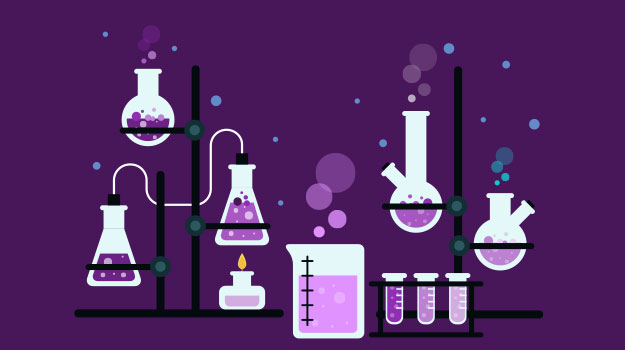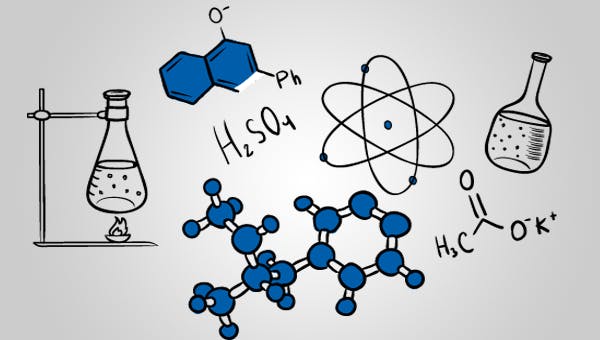IB DP: Chemistry
Chemistry is an experimental science that combines academic study with the acquisition of practical and investigational skills. Chemistry, in IB DP, is taught practically. By studying Chemistry in the DP students should become aware of how scientists work and communicate with each other. Students have the opportunity to design investigations, collect data, develop manipulative skills, analyze results, collaborate with peers and evaluate and interpret their findings. The investigations may be laboratory based or they may make use of simulations and data bases. Students develop the skills to work independently on their own design, but also collegiately, including collaboration with schools in different regions, to mirror the way in which scientific research is conducted in the wider community.
Aims of the Course
The aims of the course according to the IB DP Chemistry Brief are to enable students to-
- Appreciate scientific study and creativity within a global context through stimulating and challenging opportunities
- Acquire a body of knowledge, methods and techniques that characterize science and technology
- Apply and use a body of knowledge, methods and techniques that characterize science and technology
- Develop an ability to analyze, evaluate and synthesize scientific information
- Develop a critical awareness of the need for, and the value of, effective collaboration and communication during scientific activities
- Develop experimental and investigative scientific skills including the use of current technologies
- Develop and apply 21st century communication skills in the study of science
- Become critically aware, as global citizens, of the ethical implications of using science and technology
- Develop an appreciation of the possibilities and limitations of science and technology
10.Develop an understanding of the relationships between scientific disciplines and their influence on other areas of knowledge.
Key features of the curriculum
- Available at standard (SL) and higher levels (HL)
- The minimum prescribed number of hours is 150 for SL and 240 for HL
- Students are assessed both externally and internally
- Chemistry students at SL and HL undertake a common core syllabus and a common internal assessment (IA) scheme.
- While there are core skills and activities common to both SL and HL, students at HL are required to study some topics in greater depth, to study additional topics and to study extension material of a more demanding nature in the options. The distinction between SL and HL is one of breadth and depth.
- A practical approach to the course delivery is emphasised through the interdisciplinary group 4 project and a mixture of both short-term and long-term experiments and investigations.

Curriculum Model Overview
- Core
- Stoichiometric relationships
- Atomic structure
- Periodicity
- Chemical bonding and structure
- Energetics/thermochemistry
- Chemical kinetics
- Equilibrium
- Acids and bases
- Redox processes
10.Organic chemistry
11.Measurement and data processing
Recommended teaching hours- 95/SL, 95/HL
-
Additional higher level (AHL)
1.Atomic structure
2.The periodic table—the transition metals
3.Chemical bonding and structure
4.Energetics/thermochemistry
5.Chemical kinetics
6.Equilibrium
7.Acids and bases
8.Redox processes
9.Organic chemistry
10.Measurement and analysis
Recommended teaching hours- 60/HL -
Option (choice of one out of four)
A. Materials
B. Biochemistry
C. Energy
D. Medicinal chemistry
Recommended teaching hours- 15/SL, 25/HL -
Practical scheme of work
Prescribed and other practical activities
Individual investigation (internally assessed)
Group 4 project
Recommended teaching hours- 40/SL, 60/HL

Assessment Models
Internal assessment accounts for 20% of the final assessment and this is assessed through a single individual investigation. This investigation may involve a hands-on approach, use of data-bases, modelling, simulation or a hybrid. Student work is internally assessed by the teacher and externally moderated by the IB.
The external assessment of chemistry consists of three written papers. In paper 1 there are 30 (at SL) or 40 (at HL) multiple-choice questions. Paper 2 contains short-answer and extended-response questions on the core (and Additional Higher Level (AHL) material at HL). Paper 3 has two sections; Section A contains one data-based question and several short-answer questions on experimental work on the core (and AHL material at HL). Section B contains short-answer and extended-response questions from each of the four options.
According to the official website, the intention of this course is that students are able to fulfill the following assessment objectives:
-
Demonstrate knowledge and understanding of:
• Facts, concepts, and terminology
• Methodologies and techniques
• Communicating scientific information. -
Apply:
• Facts, concepts, and terminology
• Methodologies and techniques
• Methods of communicating scientific information. -
Formulate, analyse and evaluate:
• Hypotheses, research questions and predictions
• Methodologies and techniques
• Primary and secondary data
• Scientific explanations. -
Demonstrate the appropriate research, experimental, and personal skills necessary to carry out insightful and ethical investigations.
Want to improve your grades? Request for one to one online tutoring at Vidyalai.com with the best IB teachers. 100% money back guarantee. Request your first lesson now!